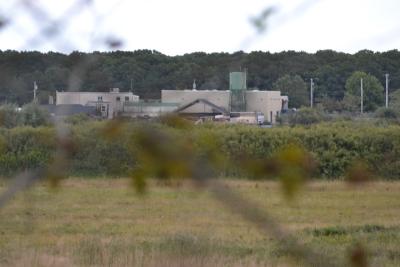On Hamlets’ Future: Hearings Begin

Public hearings on a series of studies aimed at developing long-range plans for each of East Hampton Town’s hamlets will begin tonight at Town Hall, when the town board takes comments on a Wainscott hamlet study and an overall business study.
The hamlet studies got underway in 2015, with public input beginning the following year. Consultants engaged by the town to assist in the studies, Peter Flinker of Dodson and Flinker, a Massachusetts consulting firm, and Lisa Liquori of Fine Arts and Sciences, a former town planning director, have presented updates since then based on public comment from individuals, the hamlets’ citizens advisory committees, chambers of commerce, and East Hampton Village. The goal is to adopt recommendations for each hamlet — Wainscott, Springs, Amagansett, Montauk, and areas of East Hampton outside of the village —that will be incorporated into the town’s comprehensive plan.
Tonight’s meeting begins at 6:30. Looking ahead, The East Hampton hamlet study will be subject of a hearing on Oct. 18. Next up, on Nov. 1, will be Amagansett, followed by Springs on Nov. 15, and Montauk on Dec. 6.
All of the public hearings will happen at Town Hall, during town board meetings that start at 6:30 p.m. While an individual hamlet will be the focus of each hearing, public comment on any hamlet will be accepted at all of the hearings.
The board decided in August to schedule the hearings and review any comments before determining any environmental impacts under the State Environmental Quality Review Act. The studies are then to be forwarded to the Suffolk County Planning Commission, which would have 30 days to offer its comments.
A vote to adopt the recommendations would follow. But adoption, Supervisor Peter Van Scoyoc said in August, was “a broader stroke” than other regulatory legislation necessary to put recommendations into effect. The next step, he said, would be to “look at creating zoning laws or other means of regulation” to legalize the recommendations.
Affordable housing, congested roadways during the tourist season, and bicycle and pedestrian connectivity are common themes among the hamlet studies, the former requiring infrastructure to address wastewater treatment, the latter requiring a rethinking of the existing vehicle-oriented development with respect to streets and sidewalks.
A lack of pedestrian connectivity and outdoor spaces is detrimental to Wainscott’s character, the study has suggested, and the haphazard development of its commercial district has brought a strip-mall look and feel with many curb cuts and uncoordinated parking lots. A rethinking could include connected parking lots behind the commercial buildings on the north side of Montauk Highway. Future uses of the sandpit, which will eventually cease operation, could include expanded commercial or mixed use, affordable housing, parking, a Long Island Rail Road station, or open space. (A development proposal now before the East Hampton Town Planning Board seeks to divide the sand and gravel pit into 50 lots with a commercial center.)
The East Hampton hamlet study notes that connections between existing parking lots on Pantigo Road would reduce traffic and the number of curb cuts, and lighted crosswalks would enhance pedestrian safety. Traffic congestion at North Main Street has been identified as a concern and flow should be improved between Cedar Street, Collins Avenue, and North Main Street, a bottleneck between East Hampton and Springs, the consultants have suggested. The convergence of Three Mile Harbor Road, Springs Fireplace Road, and North Main Street might also be reworked. Cedar Street could be narrowed to allow safer pedestrian crossing while adding a second eastbound left-turn lane to ease congestion.
The sandpit on Springs-Fireplace Road could become a site for development once it ceases operations. It might also be repurposed as a site for heavy vehicles and equipment owned by contractors who operate their businesses informally from Springs residences, alleviating noise and disruption in residential areas, the consultants suggest.
Issues identified in Amagansett include a shortage of parking in the commercial district and at the Long Island Rail Road station. The I.G.A. and post office are well east of the commercial district, where neither amenity exists at present.
Alleviating the shortage of affordable housing in Springs was identified as a critical need of that hamlet, where many workers live in group houses that exceed allowable density. But such housing would have to address an impact to water quality and an already burdened school district.
In Montauk, where sea level rise threatens the downtown and dock areas, consideration has been given to a retreat from the ocean shoreline and a gradual shift to more lightly developed higher ground. Infill and second-story residential development could provide affordable work force housing. Mixed-use buildings and transit-oriented development have been considered at the area near the Long Island Rail Road station on Fort Pond Bay.
